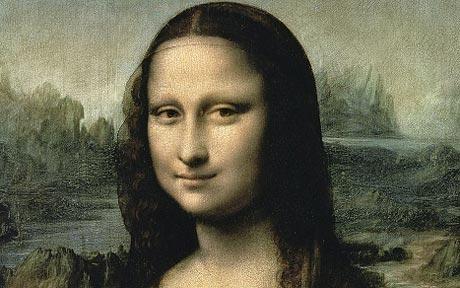The secret to Leonardo da Vinci's Mona Lisa's optical effect for Mona Lisa painting was first deciphered by French researchers.
Scientists have discovered this famous painter how to achieve his own smoky effect, called sfumato on the picture, by creating up to 40 ultra-thin enamel layers that don't pass. more than 40 micro meters (equivalent to half the size of a hair) with your finger.
The sfumato technique - drawing translucent nuances together - allows da Vinci to create lines of illusory effects, impressing the depth and shadow of the painting.

Leonardo da Vinci's Mona Lisa.Photo: Internet
The enzymes mixed with different colorants are very clever so that they only produce a slightly fuzzy color and the darkness of the Mona Lisa's mouth makes it difficult for viewers to see the picture in a direct opposite position. see Mona Lisa's smile.
The researchers also used fluorescent X-ray spectroscopy, a 'no injury' technique, to study their paint colors and their chemical composition. It shows that Leonardo da Vinci used paint and enamel layers at various levels at different positions on his face. And when the enamel layers are naturally dried over the years, it will create an effect for the painting as it is today.
The researchers also said that they suspected that it was the painter who used his fingers to put the yeast on his painting, as the researchers did not find traces of brooms or brushes. used to create lines on the picture.
Leonardo is known to be a very effective painter who uses Sfumato method to make the lines become seamless to blur the outline of the painting. These techniques require very high precision and how to achieve it has long been very appealing to art experts.
The new findings were made by scientists at the "Laboratoire du Center de Recherche Science Center de France Restauration des Musees de France" and the European Crusaders (Synchrotron) Europe.
The research results were also published in the scientific journal Angewandle Chemie. Dr. Philippe Walter, head of the research team, said:
"The hierarchy of tones or colors from morning to night in this painting is almost indistinguishable."
"There is a need to emphasize the thin enamel. It is evidence that the artist has been so cleverly able to create such thin enamel layers. Moreover, the change is slow and continuous in thickness. The yeast's classes also imply that the enamel layers have been used to effectively create the best dark spots for the painting. "
"Even today, the technique to create such thin enamel is still an amazing achievement for master artists."
Along with the Mona Lisa, the team also explored the tones displayed in the other six famous works of Leonardo da Vinci: "Virgin of the Rocks" , "Madonna of the Carnation" , "Saint John " , " the Baptist " , " the Virgin " and " the Child " .
They found that each enamel coating was only about 2 micrometers thick, which is 50 times thinner than a human hair. In the orange area the author used the thinnest glaze, the darkest enamel was found in the dark area in the picture with a thickness of about 55 micro meters.
Black and red pigment particles were also found in the painting but they were too small and undetectable using conventional analytical techniques.
 'Fine laughs' - Scary and painful torture in ancient times
'Fine laughs' - Scary and painful torture in ancient times The sequence of numbers 142857 of the Egyptian pyramids is known as the strangest number in the world - Why?
The sequence of numbers 142857 of the Egyptian pyramids is known as the strangest number in the world - Why? History of the iron
History of the iron What is alum?
What is alum?